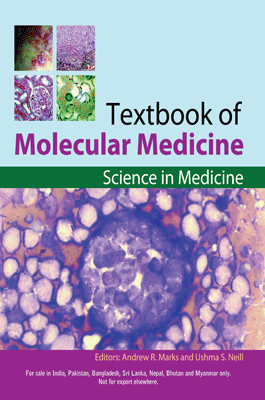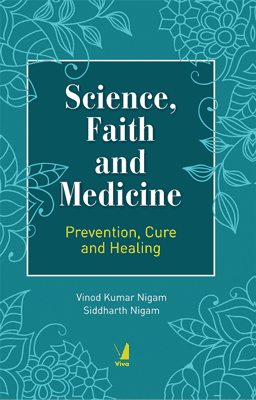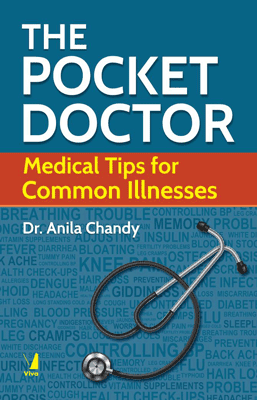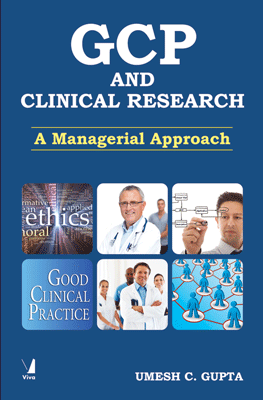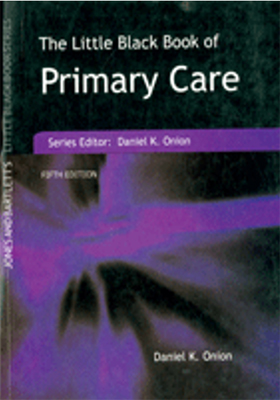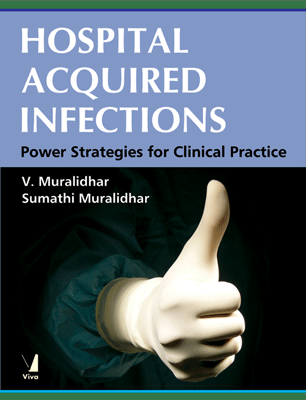Textbook of Molecular Medicine
Textbook of Molecular Medicine
Science in Medicine
₹1,345.50 ₹1,495.00 Save: ₹149.50 (10%)
Go to cartISBN: 9789380108551
Bind: Paperback
Year: 2010
Pages: 1172
Size: Other mm
Publisher: Jones & Bartlett Learning
Published in India by: Jones & Bartlett India
Exclusive Distributors: Viva Books
Sales Territory: India, Nepal, Pakistan, Bangladesh, Sri Lanka, Bhutan, Myanmar
Description:
Textbook of Molecular Medicine: Science in Medicine is a collection of acclaimed articles published in the Journal of Clinical Investigation during the Journal's tenure at Columbia University. The society that publishes the JCI, the American Society for Clinical Investigation (ASCI), is an honor society of physician-scientists dedicated to the advancement of research that broadens our understanding of human disease, helps to improve treatment, and inspires new generations of physician-scientists. This book is a valuable resource for medical students, graduate students, hospital staff, attending and practicing physicians, and biomedical researchers. The reviews inside examine the molecular mechanisms underlying a wide array of diseases and disorders affecting all major body systems. The fundamentals of the organ or physiological systems in question are presented alongside the genetic or physiological abnormalities that result in disease. The reviews provide an authoritative and comprehensive overview of human disease by building on known scientific concepts and treatments, translating that knowledge into the current practice of clinical medicine, and exploring where these advanced might take medicine over the next decade.
Target Audience:
Valuable resource for medical students, graduate students, hospital staff, attending and practicing physicians. Scientists involved in biomedical research can use this book to gain insight into the pathogenesis of most of the common diseases.
Contents:
Part 1: CELL DEATH
Pharmacological manipulation of cell death: clinical applications in sight? • Pharmacological manipulation of Bcl-2 family members to control cell death • Caspases: Pharmacological manipulation of cell death • IKK/NF-KB signaling: balancing life and death - a new approach to cancer therapy • Reawakening the cellular death program in neoplasia through the therapeutic blockade of IAP function • The survival kinases Akt and Pim as potential pharmacological targets • Mitochondria: pharmacological manipulation of cell death • Death versus survival: functional interaction between the apoptotic and stress-inducible heat shock protein pathways • Autophagy in cell death: an innocent convict? • Endoplasmic reticulum stress: cell life and death decisions.
PART 2: ONCOLOGY
Dysregulation of Met receptor tyrosine kinase activity in invasive tumors • Integrins in invasive growth • Stat proteins and oncogenesis • The cadherin-catenin adhesion system in signaling and cancer • Do tumor-suppressive mechanisms contribute to organism aging by inducing stem cell senescence • When cells get stressed: an integrative view of cellular senescence • Telomeres, stem cells, senescence, and cancer • Bmi1, stem cells and senescence regulation? Cellular senescence in cancer treatment: friend or foe?? Mechanisms for pituitary tumorigenesis: the plastic pituitary • Melanoma genetics and the development of rational therapeutics • Immunopathogenesis and therapy of cutaneous T cell Iymphoma • Cancer vaccines: progress reveals new complexities
PART 3: IMMUNE SYSTEM and IMMUNE-MEDIATED INJURY
IFNs and STATs in innate immunity to microorganisms • Molecular aspects of primary immunodeficiencies: lessons from cytokine and other signaling pathways? An integrated view of suppressor T cell subsets in immunoregulation • CD4+ Tregs and immune control • Tregs and allergic disease • Tregs and transplantation tolerance • C-reactive protein: a critical update • New insights into atopic dermatitis • Recent insights into the immunopathogenesis of psoriasis provide new therapeutic opportunities • Exploiting dendritic cells to improve vaccine efficacy
PART 4: INFECTIOUS DISEASES
Clinical syndromes: The enigma of sepsis • Gram-positive bacteria in health and disease: Antimicrobial resistance: the example of Staphylococcus aureus • Bacterial infectious disease control by vaccine development • Development of an improved vaccine for anthrax • Gram-negative bacteria in health and disease : Helicobacter pyloripersistence: biology and disease • The emergence of Lyme disease • Bacterial communication: The application of biofilm science to the study and control of chronic bacterial infections • Quorum sensing in Staphylococcus infections • Quorum sensing and biofilm formation in Streptococcal infections • Pharmacological inhibition of quorum sensing for the treatment of chromic bacterial infections • Pseudomonas aeruginosa quorum sensing as a potential antimicrobial target • Protozoal infections : Antimalarial drug resistance • Parasitic infections • Human African trypanosomiasis of the CNS: current issues and challenges
PART 5: VIRAL DISEASES
SARS coronavirus: a new challenge for prevention and therapy • Acute HIV revisited: new opportunities for treatment and prevention • Strategies for an HIV vaccine • Dengue: defining protective versus pathologic immunity • West Nile virus: a growing concern? • Progress on new vaccine strategies against chronic viral infections • Entry of parainfluenza virus into cells as a target for interrupting childhood respiratory disease • Influenza vaccines: present and future • Live-attenuated virus vaccines for respiratory syncytial and parainfluenza viruses: applications of reverse genetics • Herpes simplex viruses: is a vaccine tenable? • Prophylactic human papillomavirus vaccines
PART 6: RESPIRATORY SYSTEM
Disorders of lung matrix remodeling • New insights into the pathogenesis of asthma • JAK-STAT signaling in asthma • Rescuing protein conformation: Prospects for pharmacological therapy in cystic fibrosis • Epithelial-mesenchymal transition and its implications for fibrosis
PART 7: CARDIOVASCULAR SYSTEM
Oxygen, oxidative stress, hypoxia, and heart failure • NO/redox disequilibrium in the failing heart and cardiovascular system • Genetic causes of human heart failure • Protein kinase cascades in the regulation of cardiac hypertrophy • Toward transcriptional therapies for the failing heart: chemical screens to modulate genes • Mitochondrial energy metabolism in heart failure: a question of balance • Death begets failure in the heart • Unchain my heart: the scientific foundations of cardiac repair • Biological basis for the cardiovascular consequences of COX-2 inhibition: therapeutic challenges and opportunities • Sex is a potent modifier of the cardiovascular system • Vascular diseases: Cholesterol in health and disease • Cholesterol, lipid rafts, and disease • Malformation syndromes due to inborn errors of cholesterol synthesis • Intracellular cholesterol transport • Regulation and mechanisms of macrophage cholesterol efflux • Consequences of cellular cholesterol accumulation: basic concepts and physiological implications • Monogenic hypercholesterolemia: new insights in pathogenesis and treatment • Isoprenoids as mediators of the biological effects of statins • Disorders of rhythm: The channelopathies: novel insights into molecular and genetic mechanisms of human disease • Mechanisms of sudden cardiac death • Long QT syndrome: from channels to cardiac arrhythmias • Genetics of acquired long QT syndrome • Muscle channelopathies and critical points in functional and genetic studies • Inherited disorders of voltage-gated sodium channels • Cardiac and skeletal muscle disorders caused by mutations in the intracellular Ca2 + release channels • Chloride channel diseases resulting from impaired transepithelial transport or vesicular function
PART 8:HEMATOLOGY
Megakaryocyte biology and related disorders • The molecular mechanisms that control thrombopoiesis • Thrombus formation in vivo • Platelet genomics and proteomics in human health and disease • The biogenesis of platelets from megakaryocyte proplatelets • Platelets in inflammation and atherogenesis • Structure and function of the platelet integrin aIIb??3 • Minding the haps to promote thrombus growth and stability • Untying the Gordian knot: policies, practices, and ethical issues related to banking of umbilical cord blood
PART 9: GASTROINTESTINAL SYSTEM
Intestinal ion transport and the pathophysiology of diarrhea • Molecular mediators of hepatic steatosis and liver injury • Liver Fibrosis • SREBPs: activators of the complete program of cholestrol and fatty acid synthesis in the liver
PART 10: ENDOCRINOLOGY AND METABOLISM
Genetic epidemiology of diabetes • ATP-sensitive potassium channelopathies: focus on insulin secretion • Gestational diabetes mellitus • Regeneration of the pancreatic ?? cell • Challenges facing islet transplantation for the treatment of type 1 diabetes mellitus • How does blood glucose control with insulin save in intensive care? • Thyrotropin receptor-associated diseases: from adenomata to Graves disease • Inflammation, stress, and diabetes • Adiponectin and adiponectin receptors in insulin resistance, diabetes, and the metabolic syndrome • The role of cholesterol efflux in regulating the fertilization potential of mammalian spermatozoa • Trophoblast differentiation during embryo implantation and formation of the maternal-fetal interface
PART 11: KIDNEY AND URINARY TRACT
Acute renal failure: definitions, diagnosis, pathogenesis, and therapy • Kidney stone disease • Salt handling and hypertension
PART 12: BONE AND MINERAL METABOLISM • Pathogenesis of osteoporosis: concepts, conflicts and prospects • Paget disease of bone • Estrogen deficiency and bone loss: an inflammatory tale • Regulation of bone mass by Wnt signaling
PART 13: NEUROLOGIC DISORDERS
VEGF: A critical player in neurodegeneration • Neurogenesis and brain injury: managing a renewable source for repair • Oxidative stress, cell cycle, and new degeneration • The role of cerebral amyloid ?? accumulation in common forms of Alzheimer disease • Alzheimer disease therapy: Can the amyloid cascade be halted? ?
Diagnosis and treatment of Parkinson disease: molecules to medicine • Huntingtin in heath and disease • Programmed cell death in amyotrophic lateral sclerosis • Multiple sclerosis • Progress and problems in the biology, diagnostics, and therapeutics of prion diseases • The genetic epidemiology of neurodegenerative disease • Sodium channel mutations in epilepsy and other neurological disorders • Finding schizophrenia genes • The addicted human brain: insights from imaging studies
PART 14: GENETICS AND DISEASE
Mapping the new frontier • complex genetic disorders • Mapping quantitative trait loci in humans: achievements and limitations • Linkage disequilibrium maps and association mapping • Genetic counselors: translating genomic science into clinical practice • Genetic counseling throughout the life cycle • Payment of clinical research subjects • Embryonic death and the creation of human embryonic stem cells • Stem cells: science, policy, and ethics
About the Editor:
Andrew R. Marks, Editor in Chief, The Journal of Clinical Investigation, at Columbia University College of Physicians and Surgeons, New York, USA.
